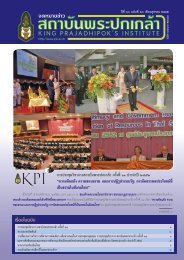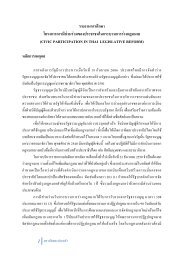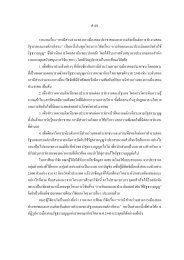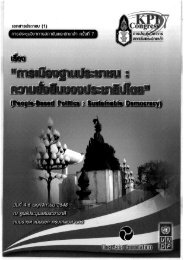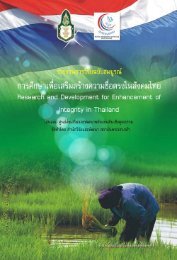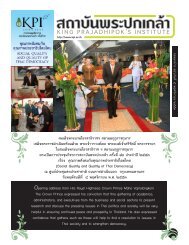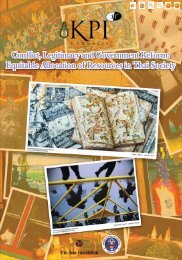SUFFiciENcy EcONOMy ANd GRASSROOtS DEvElOPMENt
SUFFiciENcy EcONOMy ANd GRASSROOtS DEvElOPMENt
SUFFiciENcy EcONOMy ANd GRASSROOtS DEvElOPMENt
Create successful ePaper yourself
Turn your PDF publications into a flip-book with our unique Google optimized e-Paper software.
284<br />
The Meaning of Sufficiency Economy <br />
International Conference<br />
to develop more effective ways of providing financial services. These programs vary<br />
from regional rural banks with a social mandate to MFIs. In 1999, the GOI merged<br />
various credit programs together, refined them and launched a new programme<br />
called Swarnajayanti Gram Swarozagar Yojana (SGSY). The mandate of SGSY is to<br />
continue to provide subsidized credit to the poor through the banking sector to<br />
generate self-employment through a self-help group approach and the program has<br />
grown to an enormous size.<br />
<br />
Statement of the Problem<br />
In spite of the massive scale of government intervention towards rural<br />
development in India, rural India continues to be reeling under poverty and related<br />
problems. Not withstanding the phenomenal progress seen in the rural credit<br />
structure in terms of volume of credit extended, concessionality, coverage of weaker<br />
sections including scheduled castes and tribes, almost all institutions constituting the<br />
formal part of the rural credit system, suffer from several shortcomings like; (a) Gap<br />
between the concern of the policy makers and the quality of the effort (b) Defects in<br />
policy design (c) Infirmities in implementation (d) Loans to the poor wee considered<br />
as a part of social sector lending and not commercial (e) It was felt that poor were<br />
not borrowers but beneficiaries (f) An attitude of ‘carefully disguised cynicism<br />
towards the poor’ and (g) An attitude of ‘poor are not bankable’.<br />
This possibly has been due to the absence of the people’s participation in the<br />
development programmes and also due to the gap in mutual understanding about<br />
perspectives of the supply side (the government, planners and the bureaucracy) on<br />
the one hand and the demand side (the rural poor) on the other. This gap is felt to be<br />
filled by the microfinance activity through the Self Help Group approach for<br />
sustainable rural development. <br />
The significant feature of the Self Help Groups (SHGs) is that they provide<br />
credit to the poor at unsubsidized interest rates besides having relatively low default<br />
rates on these loans. SHGs reduce transaction costs of financial institutions that do<br />
business with the poor and that of the SHGs themselves. They reduce the cost of<br />
financial institutions by acting as intermediary organisations or by providing social<br />
collateral that substitute for costly loan appraisals and supervisions. SHG approach<br />
has made considerable impact on the development of rural economy in terms of<br />
increasing savings of the poor, providing access to credit for the poor at reasonable<br />
rates of interest by establishing linkages with the formal financial institutions,<br />
improving the production levels and income levels, increasing food security and<br />
standard of living, improving asset creation and enhancing income generation<br />
activities, augmenting environment sustainability and contributing for the much<br />
needed women empowerment. With the enthusiastic roles played by the NGOs, the<br />
banks, the public and the governments, over a period of one and a half decade, the<br />
SHG approach has transformed into a movement in the rural areas.



